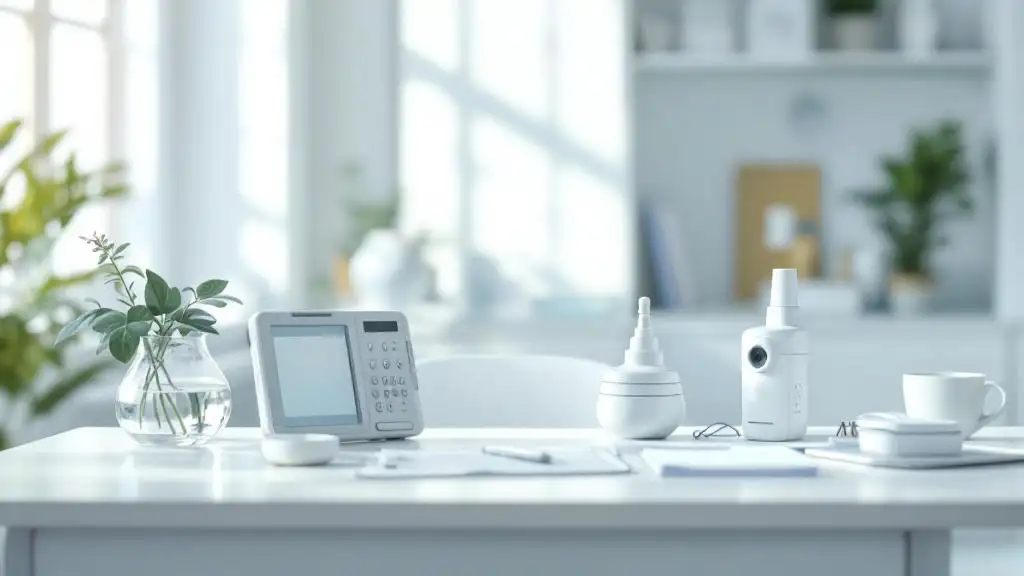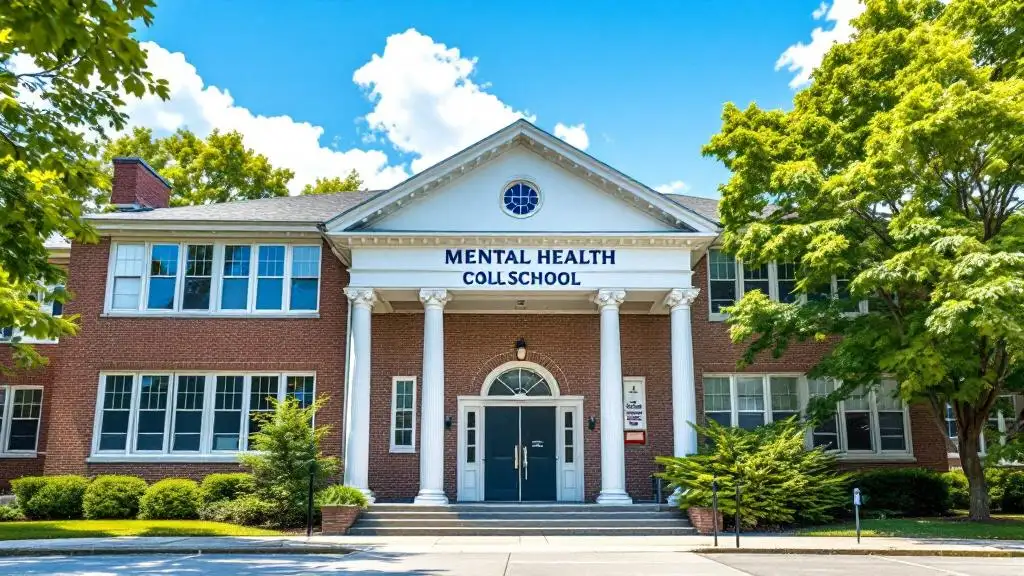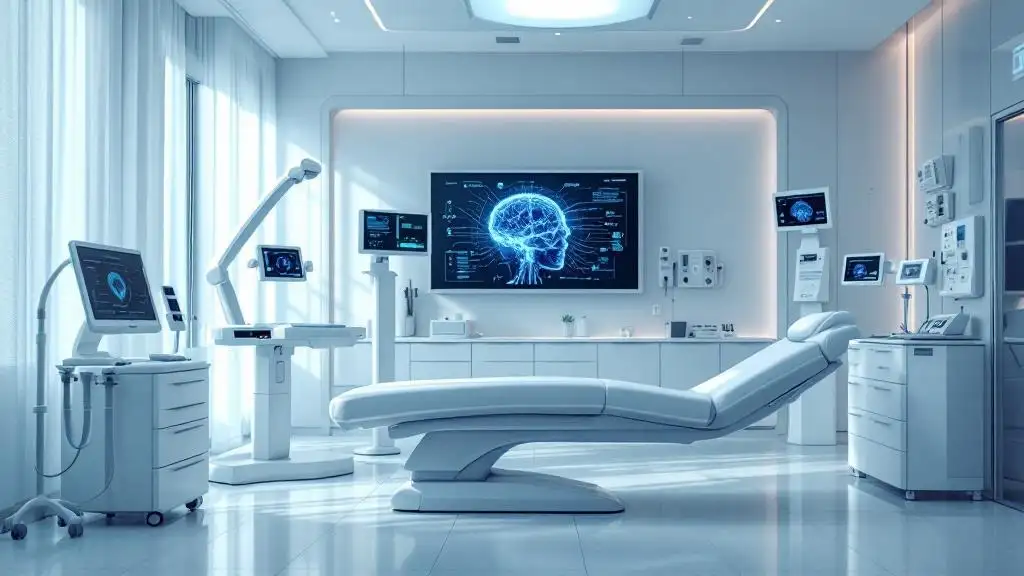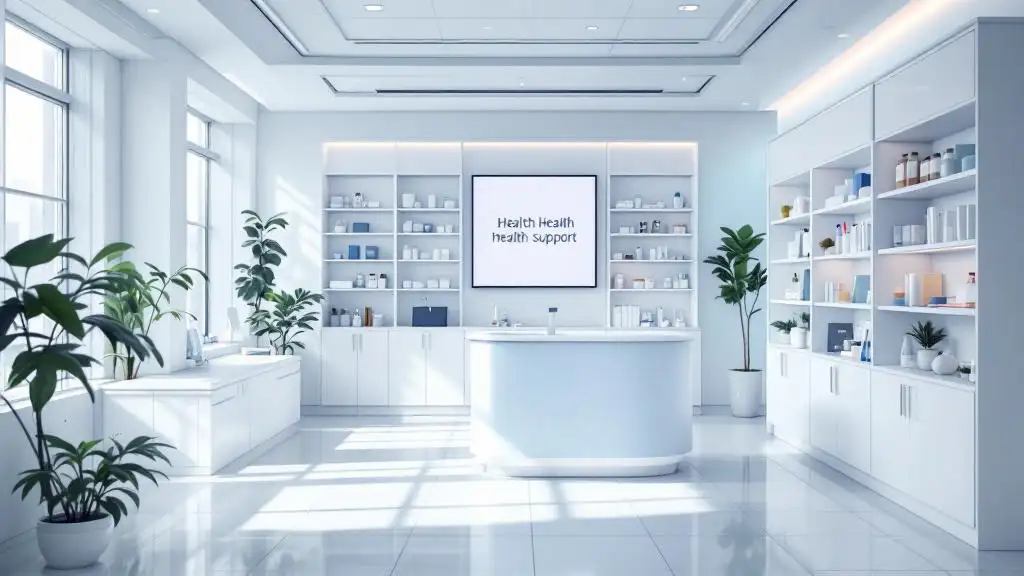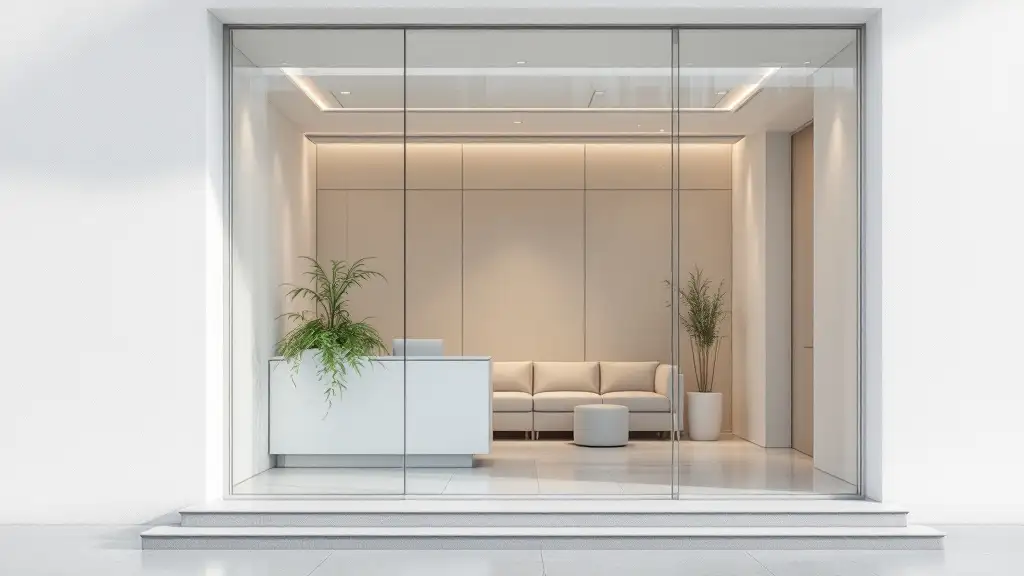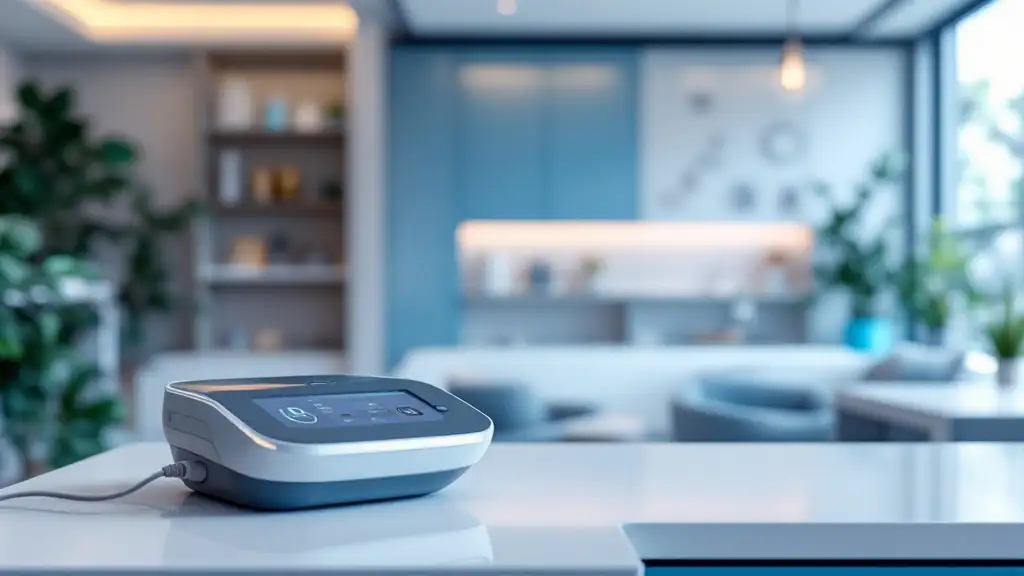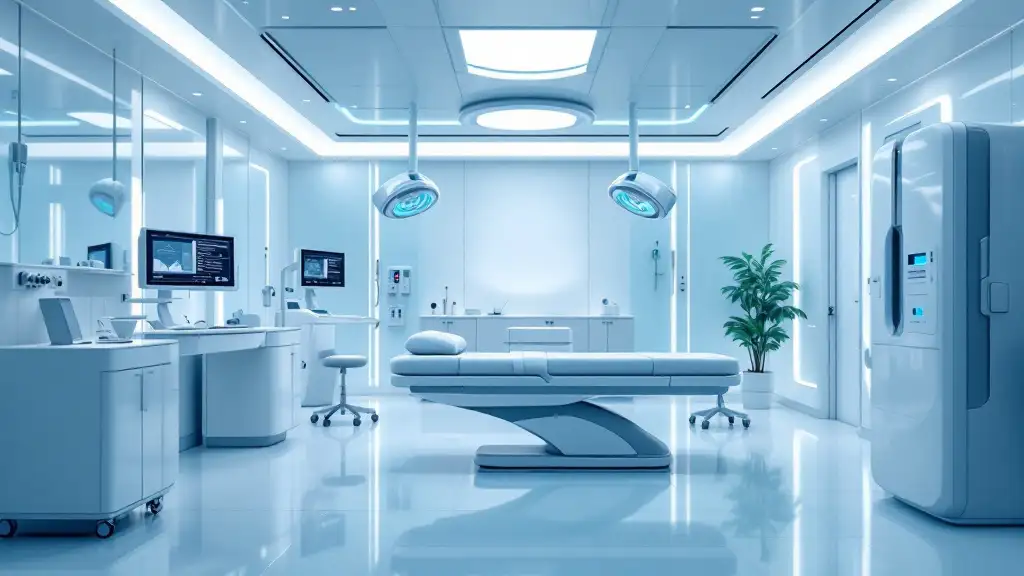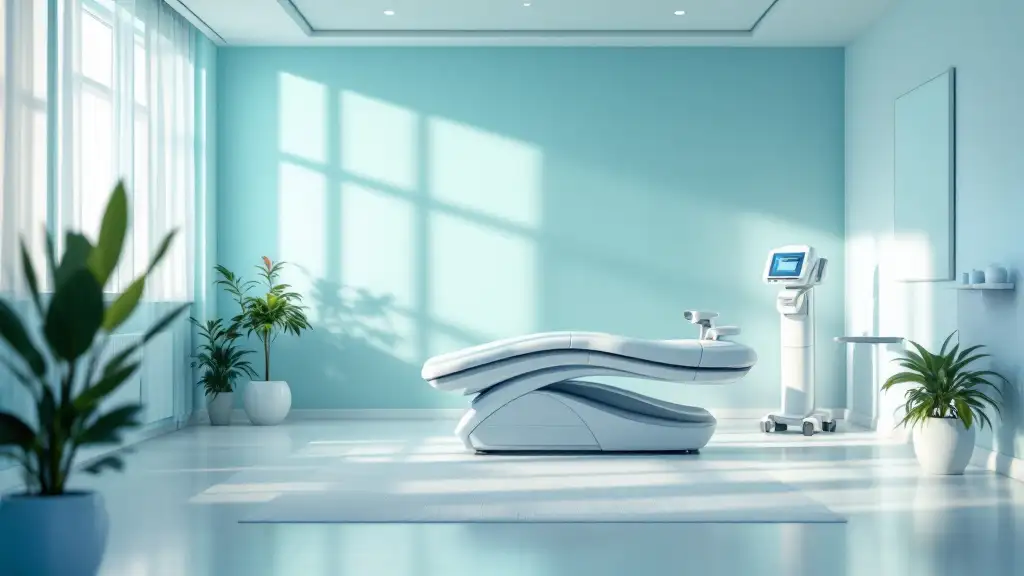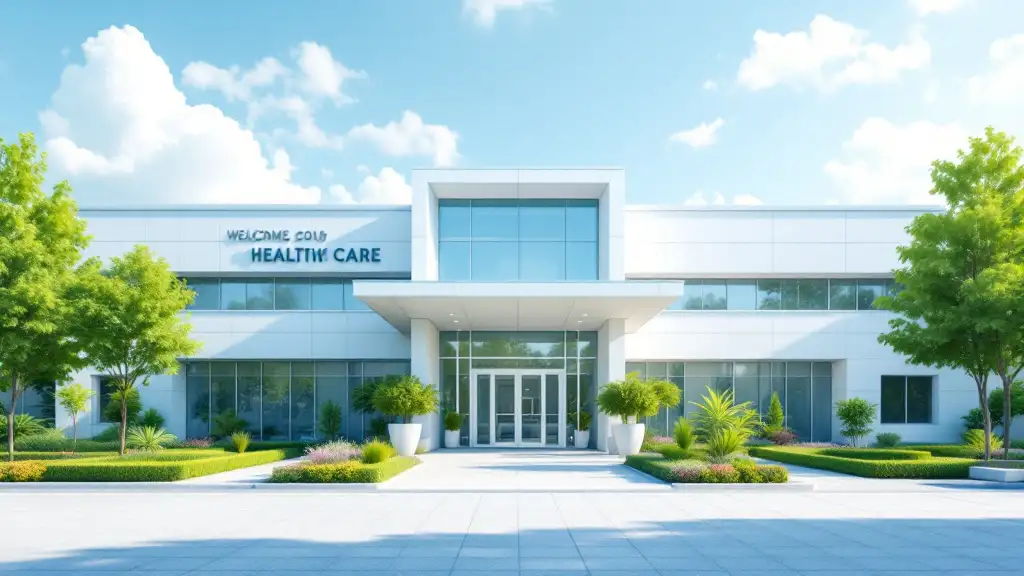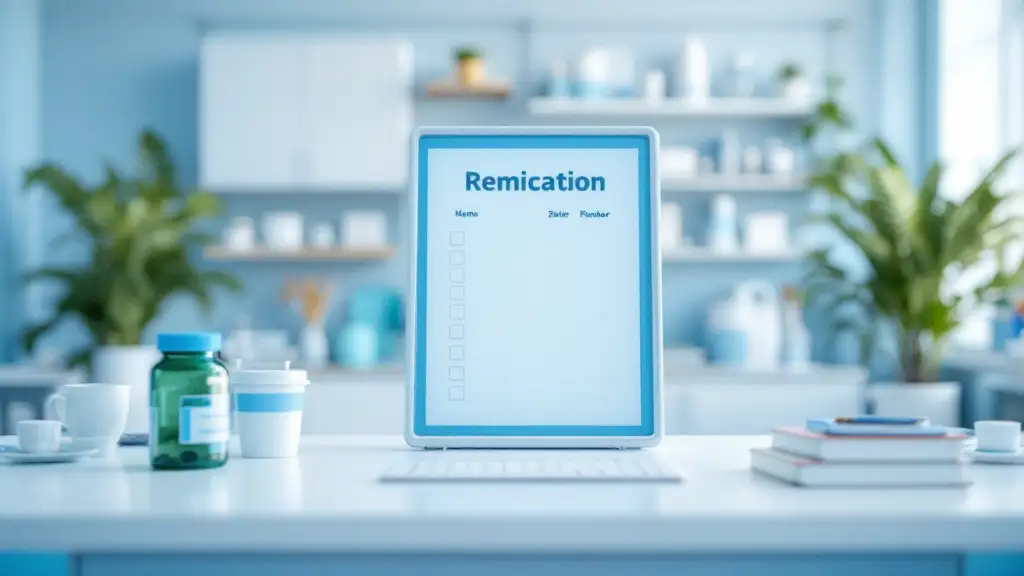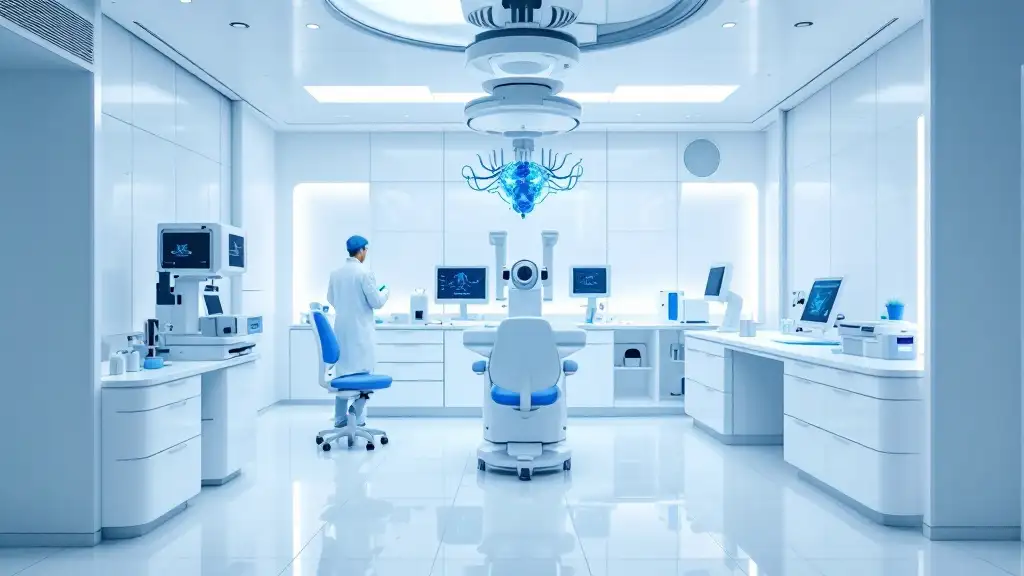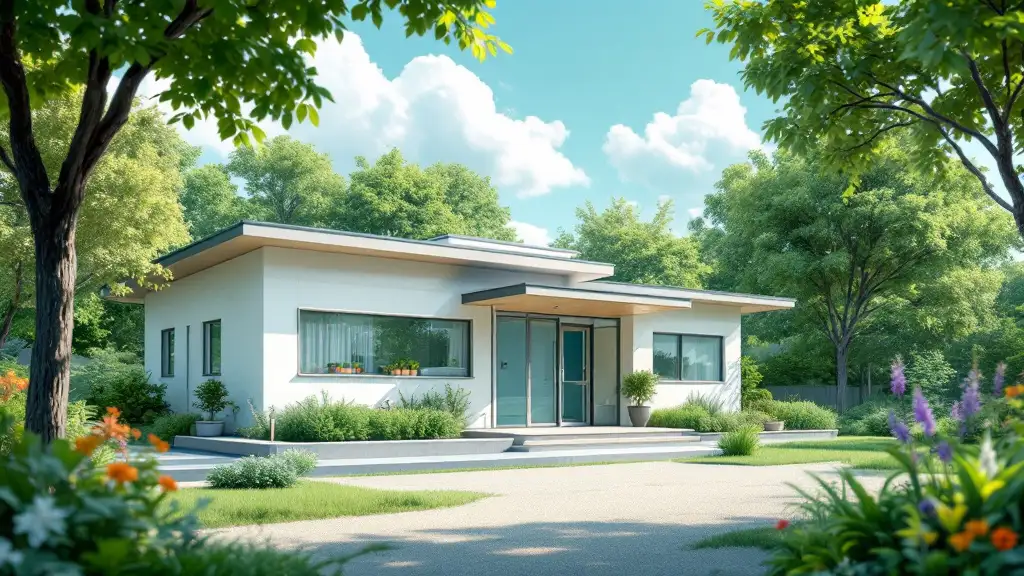The Importance of Follow-Up in TMS Treatment
Transcranial Magnetic Stimulation (TMS) has become a prominent non-invasive therapy for treatment-resistant depression. While its initial course involves a series of sessions over several weeks, many patients and clinicians wonder about the necessity and frequency of follow-up or maintenance sessions. This article explores whether TMS requires follow-up treatments, the nature of these sessions, and their impact on sustaining mental health improvements.
Overview of TMS Therapy and Treatment Protocols
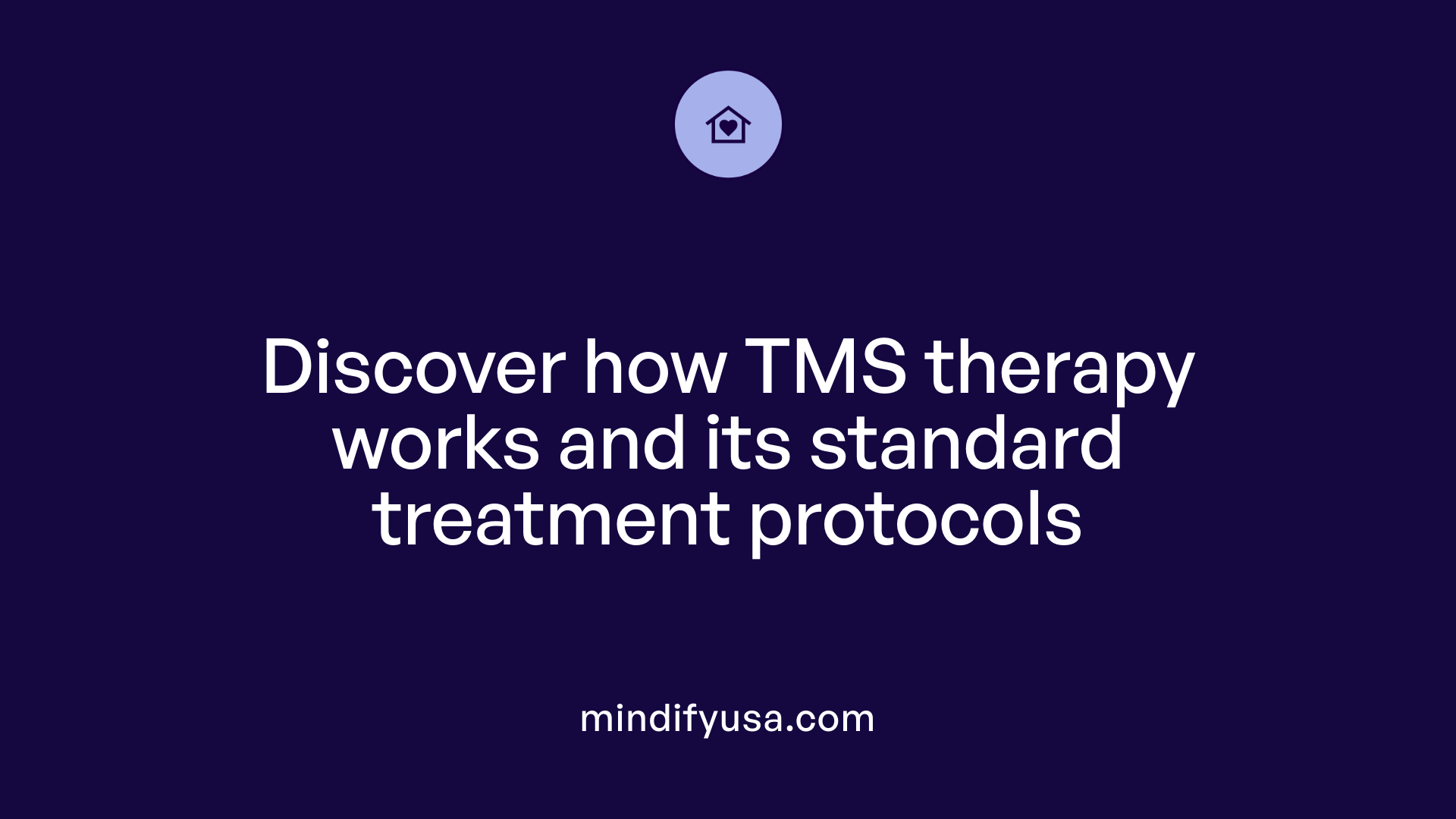
What is TMS therapy?
Repetitive transcranial magnetic stimulation (rTMS) is a non-invasive treatment approved by the FDA since 2008, primarily used to address major depressive disorder and other mental health conditions like OCD and PTSD. It uses magnetic pulses directed at the dorsolateral prefrontal cortex, a brain region involved in mood regulation that can be underactive in depression.
What is the typical protocol for TMS treatment?
The usual TMS treatment spans 4 to 6 weeks, involving daily sessions five days a week, typically Monday through Friday. Patients undergo about 20 to 36 sessions in total. Each session usually lasts 20 to 40 minutes, with magnetic pulses precisely targeting the dorsolateral prefrontal cortex to stimulate neural activity and promote lasting neuroplastic changes.
Which brain regions does TMS target?
TMS specifically targets the dorsolateral prefrontal cortex, a crucial area implicated in mood regulation. By stimulating this region with magnetic pulses, TMS helps improve symptoms of depression by reactivating areas that show reduced activity in affected individuals.
This standard TMS protocol balances the need for sufficient treatment intensity and patient convenience, which helps achieve meaningful improvement or remission of symptoms over several weeks of therapy.
Efficacy and Outcomes of Initial TMS Treatment
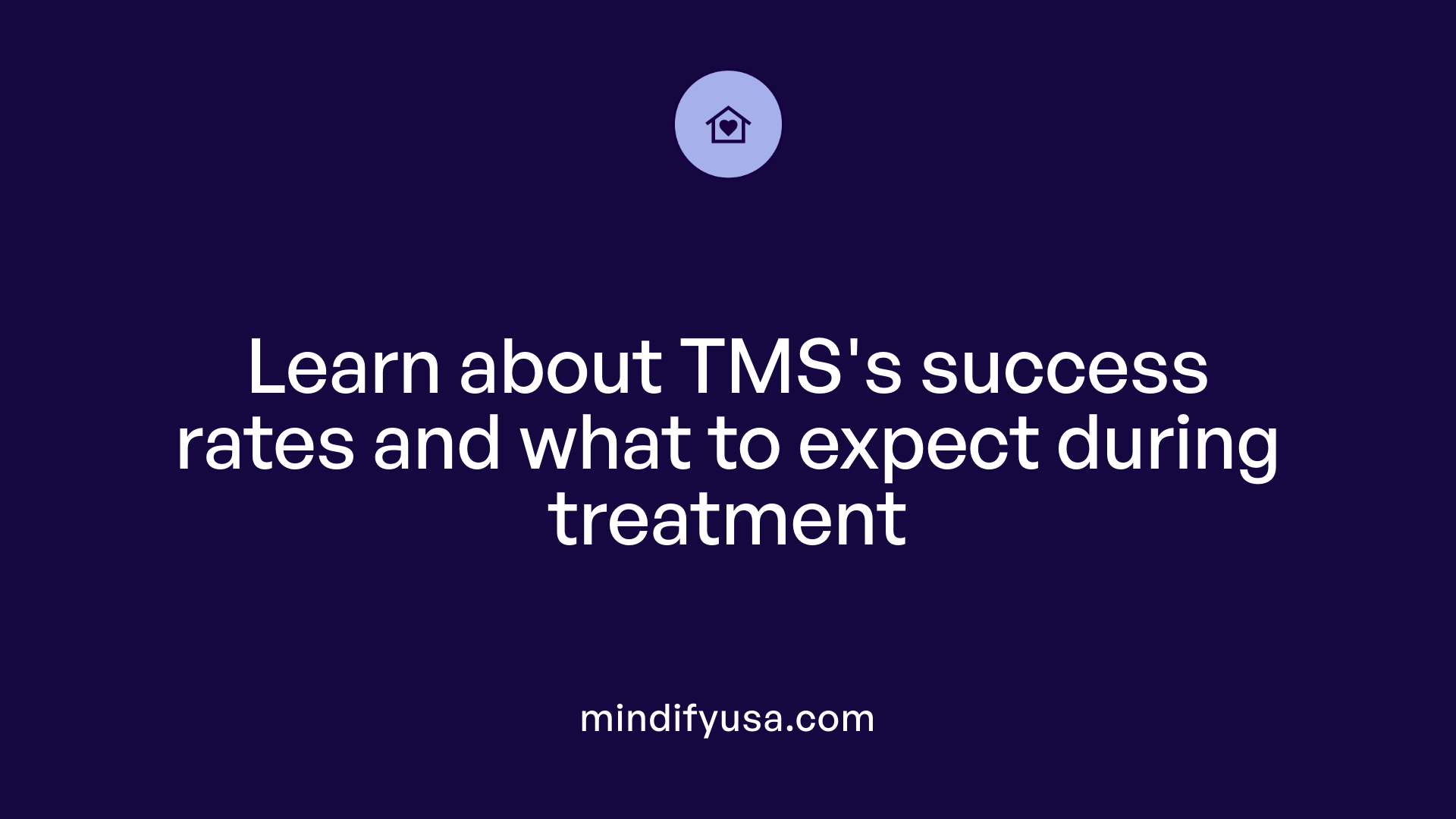
How effective is TMS in treating depression?
Clinical studies and meta-analyses consistently show that TMS is an effective therapy for treatment-resistant depression. Approximately 50-60% of patients experience significant symptom improvement after a full course of treatment. Furthermore, remission rates—the complete resolution of depressive symptoms—occur in about one-third to half of patients.
Symptom improvement timelines
Most patients begin to notice symptom improvement around the third to fourth week of treatment, highlighting the importance of completing the full course, which typically involves 20 to 30 sessions over 4 to 6 weeks. Each session lasts 20 to 40 minutes and is generally administered daily during weekdays.
Response and remission rates
Studies show response rates (meaning a ≥50% reduction in depression severity) reach close to 60%. Remission rates vary, with some large randomized controlled trials (RCTs) reporting up to around 50% of patients achieving full remission over time. Additionally, many patients who respond maintain remission for about six months, especially when continuation or maintenance sessions are applied.
Clinical study support
The efficacy of TMS is supported by large multisite RCTs involving more than 700 patients, including both industry-sponsored and independent trials. Meta-analyses confirm its statistically and clinically significant effect on depression symptoms. Professional organizations like the American Psychiatric Association endorse TMS as a valid treatment option for major depressive disorder (MDD), particularly when other therapies fail.
These findings emphasize that TMS is a well-established, evidence-based treatment for depression with robust data supporting its clinical use and benefits.
Safety Profile and Side Effects of TMS

Is TMS safe and what side effects does it have?
Transcranial magnetic stimulation (TMS) is widely regarded as a safe and well-tolerated treatment option for depression and other mental health conditions. The most common side effects experienced during and after TMS sessions are mild and temporary. These include scalp discomfort or sensations at the stimulation site, headaches, and muscle twitching near the area being treated.
Unlike electroconvulsive therapy (ECT), TMS does not require anesthesia nor does it induce seizures as part of the treatment process. This makes TMS less invasive and free from the significant cognitive side effects sometimes associated with ECT. The risk of seizures with TMS is very low, estimated at about 0.1%, and safety protocols are in place to minimize this risk.
Comparison to other treatments
Compared to other treatment modalities like ECT, TMS does not require sedation or hospitalization. Patients can immediately return to their normal daily activities following each session, as there is no recovery time needed. Additionally, TMS is noninvasive and does not involve radiation or implanted devices, making it generally as safe as undergoing an MRI scan.
Patient suitability
TMS is suitable for adults aged 18 years and older who suffer from treatment-resistant depression or other approved conditions such as OCD, certain migraines, and smoking cessation. However, patients with non-removable metal in their head or certain neurological conditions may not be appropriate candidates for TMS. The treatment is carefully personalized, with the stimulation site and intensity adjusted based on individual motor threshold measurements.
Overall, the favorable safety profile and minimal side effects make TMS an attractive alternative or adjunct to antidepressant medications and psychotherapy, especially for those who have not achieved desired results from these treatments.
The Necessity of Follow-Up and Maintenance TMS Sessions

Does TMS require follow-up sessions after the initial treatment course?
While follow-up or maintenance transcranial magnetic stimulation (TMS) sessions are not yet a standardized part of every treatment protocol, ongoing care is commonly recommended for patients recovering from depression. Maintenance TMS involves scheduling additional sessions beyond the initial course, which typically lasts 4 to 6 weeks with 20 to 30 sessions. These sessions can be spaced weekly, bimonthly, or monthly depending on patient needs.
Definition of maintenance TMS
Maintenance TMS refers to periodic treatment sessions following the completion of the acute phase of TMS therapy. The goal is to sustain symptom improvement and reduce the risk of relapse by continuing to stimulate the dorsolateral prefrontal cortex, the brain region involved in mood regulation. This approach aims to maintain neuroplastic changes induced by the initial sessions.
Current clinical guidelines
Although maintenance TMS has not yet been universally adopted as a standard care practice, multiple studies and clinical guidelines support its use in cases of recurrent or treatment-resistant depression. Professional organizations such as the American Psychiatric Association recognize ongoing or maintenance TMS sessions as a viable strategy to preserve treatment benefits. Furthermore, durability studies show antidepressant effects may last from 3 to 12 months, especially with continuation treatments.
Preventing depression relapse
Relapse is common in depression, even after successful TMS treatment. Maintenance TMS has been shown to significantly reduce relapse rates compared to no follow-up treatment. Patients who receive preservation sessions experience a longer duration of remission and better overall mental health stability. If symptoms recurred 2 to 3 months after initial improvement, repeating TMS is also an option frequently covered by insurance.
TMS maintenance represents a promising extension of this effective treatment, providing a proactive approach to long-term depression management and improving outcomes in patients prone to relapse.
Integration of TMS with Comprehensive Mental Health Services
How is TMS combined with medication and psychotherapy?
Transcranial magnetic stimulation (TMS) is often used alongside traditional treatments like medication and psychotherapy to enhance overall effectiveness. Patients who experience side effects from antidepressants or who have not fully responded to medications may benefit from the addition of TMS. This combined approach allows for more tailored treatment plans that address the unique needs of each individual, optimizing symptom relief.
What role does ongoing care play after TMS treatment?
Following a TMS treatment course, ongoing care is essential to maintain improvements in mental health. Recommendations typically include continued medication management and psychotherapy sessions. Maintenance TMS sessions are also explored to help prevent relapse, with some patients receiving periodic boosters weekly, bi-monthly, or monthly as part of a long-term strategy to sustain symptom remission.
What mental health services are included in holistic treatment?
Comprehensive mental health care usually incorporates several modalities, such as psychotherapy, medication management, counseling, crisis intervention, and support groups. TMS fits well within this framework as a noninvasive option that complements these treatments. It is integrated into multidisciplinary care plans to address complex mental health issues intensively and holistically.
Patients benefit from this integrated approach because it tackles depression and related disorders from multiple angles, improving the chances for sustained recovery. This holistic strategy recognizes depression as a chronic condition often requiring various therapies working in concert rather than a single stand-alone treatment.
| Service Type | Description | Role of TMS Integration |
|---|---|---|
| Psychotherapy | Talk therapies addressing emotional and behavioral issues | Used alongside to enhance mood regulation and coping skills |
| Medication Management | Use of antidepressants or anxiolytics | TMS offers an alternative or supplement when meds are insufficient or cause side effects |
| Counseling & Support | Guidance and peer support systems | Supports emotional wellbeing throughout TMS treatment course |
| Crisis Intervention | Immediate response to mental health emergencies | Ensures safety and stability during intensive therapies like TMS |
In summary, TMS is an important adjunct in a broad mental health strategy that emphasizes personalized, ongoing care for better long-term outcomes.
Insurance Coverage and Accessibility of TMS and Follow-Up Care
Is insurance coverage available for initial and follow-up TMS sessions?
Most insurance policies cover repetitive transcranial magnetic stimulation (TMS) therapy for depression when specific medical necessity criteria are met. This coverage typically includes the initial course of treatment, which involves daily sessions over 4 to 6 weeks.
Furthermore, if patients experience a recurrence of symptoms after 2 to 3 months of initial improvement, repeated TMS treatment is generally reimbursed by most insurance providers. This reflects growing recognition of TMS as an effective treatment strategy requiring possibly multiple, spaced courses to manage depression.
Although maintenance TMS sessions are not yet standard practice, they are gaining attention as a method to prevent relapse. Increasingly, some insurance plans may cover these ongoing maintenance sessions, especially as clinical studies support their role in sustaining remission. Patients interested in maintenance treatment should confirm coverage specifics with their provider.
Access considerations
TMS therapy is widely available in many clinical settings and does not require hospitalization or anesthesia, making it accessible for adult patients with treatment-resistant depression or certain other mental health conditions. The treatment's noninvasive nature and brief session duration allow patients to continue daily activities easily.
While insurance coverage enables broader access, patients without adequate insurance may explore payment plans offered by providers. Ongoing advocacy and clinical research aim to further establish maintenance TMS as an evidence-based, reimbursable option for long-term depression management.
Alternative TMS Protocols: Accelerated and Condensed Treatments
Are there faster TMS treatment options available?
Yes, there are faster TMS treatment options designed to shorten the overall course without compromising safety. Accelerated TMS (aTMS) and the SAINT TMS protocol represent two innovative approaches that condense traditional TMS therapy into significantly shorter timespans.
What is Accelerated TMS (aTMS)?
Accelerated TMS involves delivering multiple treatment sessions daily to speed up patient response. For example, one study administered 15 sessions over just two days, delivering a total of 15,000 pulses at 10 Hz targeting the left dorsolateral prefrontal cortex. This intense scheduling showed promising results:
- Safety: No seizures occurred, with only one serious adverse event related to suicidal ideation.
- Efficacy: Depression and anxiety symptoms decreased significantly, with effects lasting up to six weeks.
- Response Rates: 43% immediately post-treatment, with slightly lower rates at 3 and 6 weeks.
- Remission Rates: Ranged between 29% and 36% during follow-ups.
While results are promising, the study’s small sample size and open-label design limit broad conclusions. Nonetheless, aTMS could offer a time-efficient alternative to traditional multi-week TMS courses.
What is the SAINT TMS protocol?
The SAINT protocol offers an even more condensed TMS treatment, typically completed over five days. It applies a high number of pulses daily at targeted brain regions. This protocol seeks to rapidly induce mood improvement through intensive neurostimulation. Although research is underway, early data suggest SAINT may similarly accelerate symptom relief, increasing accessibility for patients needing urgent care.
Who are these protocols suitable for and what is the timescale?
Accelerated and condensed protocols may benefit adults with major depressive disorder or treatment-resistant depression who find traditional 4–6 week TMS courses challenging to complete. These options reduce overall treatment duration—down from 4–6 weeks to as little as 2 to 5 days—facilitating quicker return to daily life. However, ongoing monitoring and follow-up are important to assess durability, and further investigation is needed regarding long-term maintenance strategies after accelerated courses.
In summary, alternative TMS protocols like aTMS and SAINT provide promising, faster treatment timelines for depression. These approaches increase options for patients seeking rapid symptom improvement, though confirmation of long-term benefits and broader clinical use remain subjects for continued research.
TMS Follow-Up as Part of a Long-Term Treatment Strategy
How long do the effects of TMS last and what are the follow-up recommendations?
The therapeutic effects of Transcranial Magnetic Stimulation (TMS) typically last between 3 to 12 months after completing an initial treatment course. This duration can be extended with the use of continuation or maintenance sessions. Maintenance TMS, sometimes referred to as preservation sessions, involves scheduling follow-up treatments on a weekly, bi-monthly, or monthly basis. These sessions aim to sustain symptom improvement and prevent relapse.
Clinical guidelines recommend patients who have benefitted from TMS undergo ongoing monitoring to track symptom changes over time. If depressive symptoms recur after an initial period of improvement, a repeat course of TMS is often advised. Most insurance policies cover repeated treatments when relapse occurs, ensuring continued access to this therapy.
Maintenance TMS is not yet a universal standard but is increasingly explored as an effective strategy to prolong remission. Studies indicate that patients receiving maintenance sessions have a lower chance of relapse compared to those receiving no follow-up treatments. Health professionals often integrate TMS follow-up with ongoing care like medication management and psychotherapy to form a comprehensive long-term treatment plan.
This structured follow-up approach aligns with the chronic nature of depression, emphasizing that TMS is an effective tool not only for acute symptom relief but also for sustaining mental wellness over time.
Patient Experience: What to Expect During and After TMS Sessions
Session Duration and Frequency
TMS treatment typically involves sessions lasting 20 to 40 minutes each, conducted daily, five times a week. A complete course usually spans 4 to 6 weeks, totaling about 20 to 30 sessions. This schedule is designed to stimulate underactive areas in the brain progressively, which helps improve symptoms of depression over time.
Daily Life Impact
Patients undergoing TMS do not require anesthesia or hospitalization. Because the procedure is noninvasive and generally painless, individuals can resume their normal activities immediately after each session. Mild side effects such as scalp discomfort or headaches may occur but typically resolve quickly. Unlike other treatments like ECT, TMS has minimal cognitive side effects and a very low risk of seizures, ensuring a safe experience.
Post-Treatment Care
After completing the initial series of sessions, some patients may experience symptom improvement or remission, often becoming noticeable by the third or fourth week. To sustain benefits, ongoing care including medication or psychotherapy is often recommended. Additionally, maintenance TMS sessions—though not yet standard—may be scheduled weekly, bimonthly, or monthly to help prevent relapse.
Patients undergo regular follow-up evaluations with healthcare providers to monitor progress and adjust treatments as necessary. If symptoms return after improvement, repeated TMS courses are generally covered by insurance and can be considered a safe and effective option for continued management of depression.
Future Directions: Research Into Maintenance TMS and Broader Applications
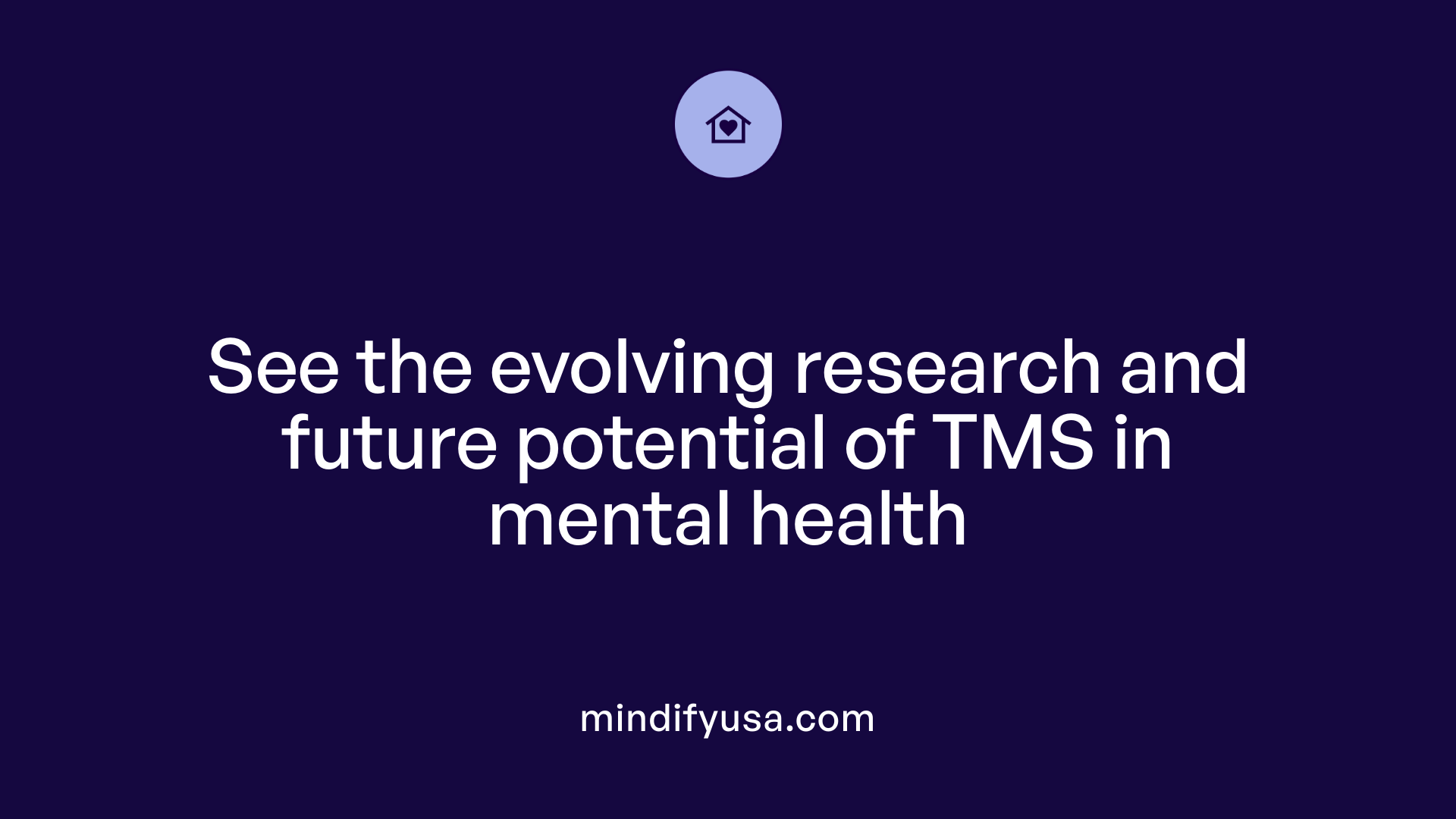
What does future research suggest about maintenance TMS and its applications?
Emerging evidence highlights the potential of maintenance transcranial magnetic stimulation (TMS) to prevent relapse in depression. Studies suggest that scheduling maintenance sessions—on a weekly, bimonthly, or monthly basis—can sustain therapeutic benefits beyond the initial treatment course. Patients who undergo these follow-up sessions tend to maintain remission longer, with fewer instances of symptom recurrence.
Apart from major depressive disorder, TMS has gained FDA approval for treating obsessive-compulsive disorder (OCD), certain types of migraines, and aiding smoking cessation. This broadening of indications reflects ongoing research efforts to expand TMS’s application across neuropsychiatric and behavioral conditions.
Future directions also include exploring personalized TMS protocols. Researchers are investigating how adjusting session frequency, pulse parameters, and treatment duration may better suit individual patient profiles. This tailoring aims to optimize efficacy, minimize side effects, and enhance long-term outcomes.
As clinical trials and real-world data accumulate, the field moves toward integrating maintenance therapy and personalized approaches into standard practice. This progress holds promise for improving the management of treatment-resistant depression and other challenging disorders through more customized and sustained TMS interventions.
Balancing Initial Success with Long-Term Care in TMS Therapy
TMS has established itself as a safe and effective treatment for major depressive disorder, especially for those who do not respond to traditional therapies. While the initial intensive course of TMS is critical for achieving symptom relief, emerging evidence supports the beneficial role of follow-up and maintenance sessions to sustain improvements and prevent relapse. Integration within a comprehensive mental health care plan, alongside psychotherapy and medication, further enhances outcomes. As research continues to clarify best practices for maintenance treatment and personalized approaches, patients can look forward to more tailored and durable management of depression through TMS therapy.
References
- Transcranial magnetic stimulation
- Transcranial Magnetic Stimulation (TMS) for Depression, ...
- TMS Therapy: How Many Sessions Are Needed?
- The Clinical TMS Society Consensus Review and ...
- Why does TMS Require Multiple Sessions?
- Transcranial Magnetic Stimulation (TMS) – Treatment For ...
- Transcranial Magnetic Stimulation (TMS)
- Ongoing Depression Treatment After TMS Therapy
- Accelerated repetitive transcranial magnetic stimulation ...
- Certified Community Behavioral Health Clinics











